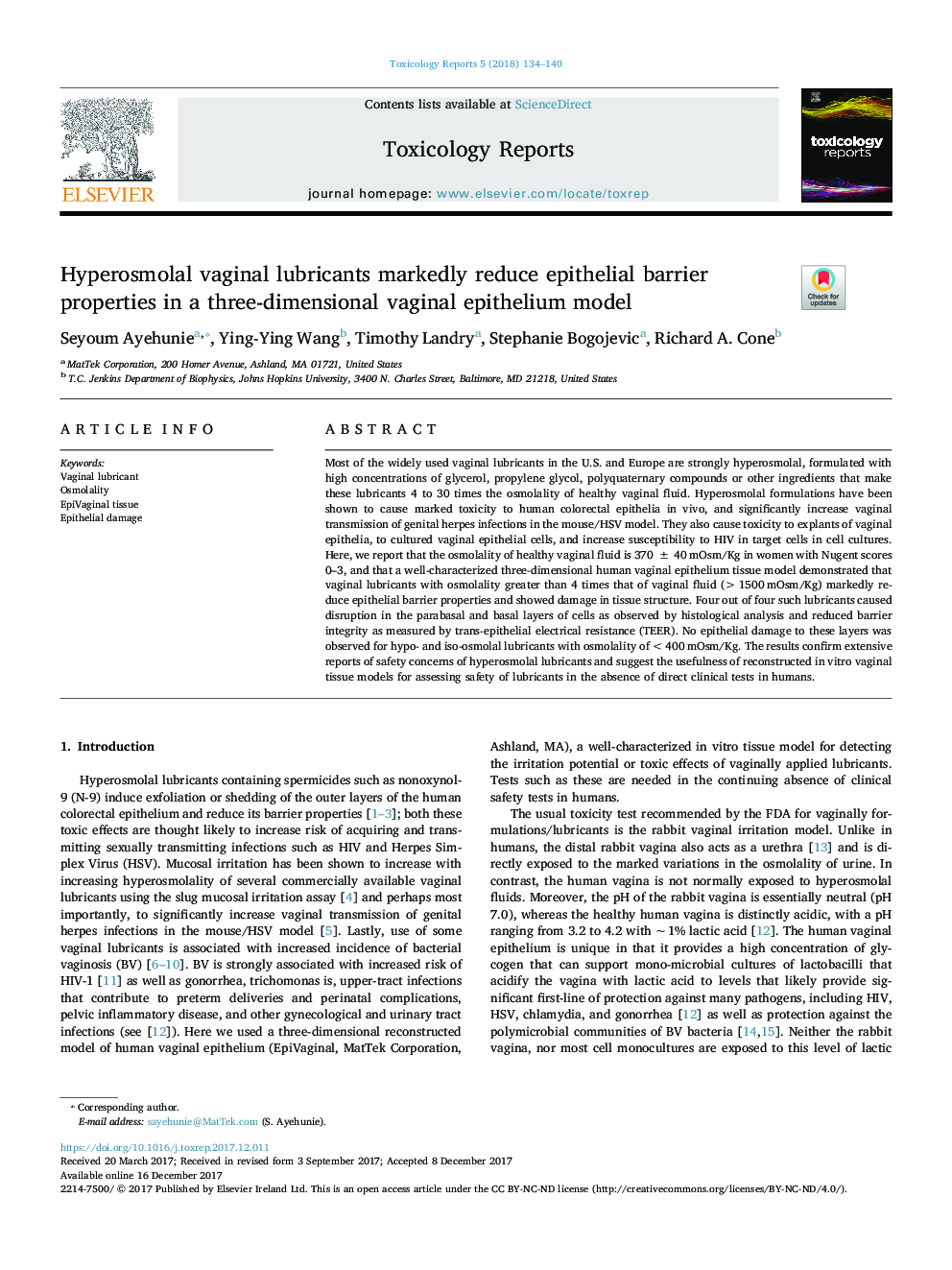| کد مقاله | کد نشریه | سال انتشار | مقاله انگلیسی | نسخه تمام متن |
|---|---|---|---|---|
| 8539364 | 1561189 | 2018 | 7 صفحه PDF | دانلود رایگان |
عنوان انگلیسی مقاله ISI
Hyperosmolal vaginal lubricants markedly reduce epithelial barrier properties in a three-dimensional vaginal epithelium model
دانلود مقاله + سفارش ترجمه
دانلود مقاله ISI انگلیسی
رایگان برای ایرانیان
موضوعات مرتبط
علوم زیستی و بیوفناوری
علوم محیط زیست
بهداشت، سم شناسی و جهش زایی
پیش نمایش صفحه اول مقاله

چکیده انگلیسی
Most of the widely used vaginal lubricants in the U.S. and Europe are strongly hyperosmolal, formulated with high concentrations of glycerol, propylene glycol, polyquaternary compounds or other ingredients that make these lubricants 4 to 30 times the osmolality of healthy vaginal fluid. Hyperosmolal formulations have been shown to cause marked toxicity to human colorectal epithelia in vivo, and significantly increase vaginal transmission of genital herpes infections in the mouse/HSV model. They also cause toxicity to explants of vaginal epithelia, to cultured vaginal epithelial cells, and increase susceptibility to HIV in target cells in cell cultures. Here, we report that the osmolality of healthy vaginal fluid is 370â¯Â±â¯40â¯mOsm/Kg in women with Nugent scores 0-3, and that a well-characterized three-dimensional human vaginal epithelium tissue model demonstrated that vaginal lubricants with osmolality greater than 4 times that of vaginal fluid (>1500â¯mOsm/Kg) markedly reduce epithelial barrier properties and showed damage in tissue structure. Four out of four such lubricants caused disruption in the parabasal and basal layers of cells as observed by histological analysis and reduced barrier integrity as measured by trans-epithelial electrical resistance (TEER). No epithelial damage to these layers was observed for hypo- and iso-osmolal lubricants with osmolality of <400â¯mOsm/Kg. The results confirm extensive reports of safety concerns of hyperosmolal lubricants and suggest the usefulness of reconstructed in vitro vaginal tissue models for assessing safety of lubricants in the absence of direct clinical tests in humans.
ناشر
Database: Elsevier - ScienceDirect (ساینس دایرکت)
Journal: Toxicology Reports - Volume 5, 2018, Pages 134-140
Journal: Toxicology Reports - Volume 5, 2018, Pages 134-140
نویسندگان
Seyoum Ayehunie, Ying-Ying Wang, Timothy Landry, Stephanie Bogojevic, Richard A. Cone,